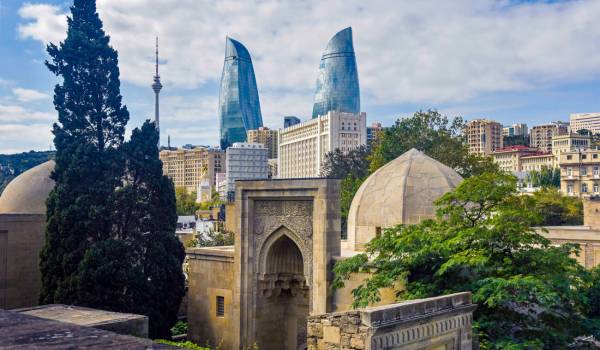
Baku
A Gobustan territory is a historical-geographical place, the historical territory of ancient Shirvan stretched from Mingachevir to the large left bank lands of the Kura River, including Darbend, as well as the Darbend Wall.
A Gobustan territory is a historical-geographical place, the historical territory of ancient Shirvan stretched from Mingachevir to the large left bank lands of the Kura River, including Darbend, as well as the Darbend Wall. That is why, from the historical-geographical point of view, when Shirvan is said, Gobustan should be considered Shirvan territory.
Gobustan district is located 101 km east of Shamakhi from Baku. From the north of Gobustan, the southern slope of the main Caucasus range passes through the watershed of Kurekchi mountain (527 m) and the south of Altyagaz village. The eastern border stretches in the direction of the Caspian Sea, the Yasamal Valley on the Absheron peninsula, and the Jeyrankechmez depression.
A part of the territory of Gobustan is included in the Khizi, Absheron, Garadagh, and Hajigabul administrative regions, and its main part is included in the Gobustan administrative region, which was established on April 24, 1990.
The most interesting and attractive object for tourists in Gobustan is the cave labyrinths located in the valley near the city, in the village of Soyunlu. (spheres). Here, it is possible to observe a very original natural phenomenon, which is popularly called "lying rock". One of the most interesting places in Gobustan is the cave labyrinths located in the valley near the city. (spheres). Here it is possible to observe a very original natural phenomenon. Caves are a system of natural galleries that were artificially expanded and adapted for living during tribal wars and raids of foreign invaders in Azerbaijan in the Middle Ages.
Caves are a system of natural galleries that were artificially expanded and adapted for living during tribal wars and raids of foreign invaders in Azerbaijan in the Middle Ages.
Acquaintance with the past of the Azerbaijani people with Gobustan rock paintings and musical stones (kaval-dashi) dating back to BC gives tourists unforgettable impressions. In the Gobustan reserve, which is included in the UNESCO World Cultural Heritage list, the life and daily life of ancient people come to life in rock paintings. There are more than 6,000 petroglyphs in Gobustan.
The oldest of them dates back to 40,000 years ago. The Gobustan reserve is located an hour and a half from Baku and covers the mountains of Beyukdash, Kichicdash, and Cingirdash. Here you can find the remains of caves, settlements, and cemeteries inhabited by people from the Paleolithic period to the Middle Ages. In addition, the famous mud volcanoes, which are considered among the rare natural wonders of the world, can be visited nearby.
Carpet weaving has also been practiced in these areas since ancient times. The patterns of local "Maraza", "Chukhanli", and "Chemcemli" carpets are famous all over the world. "Nabur" carpets are still woven by hand in the village of the same name.